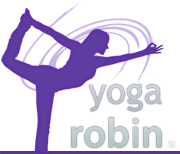My yoga moves through me and changes me one molecule at a time. Through the biggest challenges, sticking with it results in such profound change that I could feel what used to bother me now, still alive, become the guide to the next opening that I would later experience. Facing my emotional heart resulted in the biggest transformation.
Transforming within
Through yoga poses in the Ashtanga Primary Series, Second Series and beginning of Third Series every day, I cut through my ego and anger that existed on a somatic level; I evaporated the anger, and when its substance turned to mist, I followed it like a cloud, a beacon. It led me to my self-confidence and to the source of its hindrance in my always feeling (on some level) that I'm doing something wrong. Now I no longer automatically go there.
I used to require much will power to stop my story that went off on a train of thought that seemed unstoppable; my spiritual studies and activities were what lured me to a peaceful state, primarily in daily yoga, but also in a mindful lifestyle that tends to my wellbeing and continually reprograms me to remember that blessings come in many forms.
Somatic change
Changing my mentality on the somatic and molecular level (which yoga has done for me), I no longer need to use my will power to remind myself. I label energetic trauma toxins that needs to be discharged, and if I hold it without a story—just feel it in my body even if it's uncomfortable--it vanishes.
The blood that flows through me knows me best. When I do yoga, I feel my blood most. Ujjayi Pranayama breathing has been known to heal wounds and cures diseases. As the breathing enhances mental and physical fitness, it satisfies the need for our cells for oxygen.
what is a heart,
i ask, is it you?
do you hear me,
flowing blood, protecting love,
building walls, melting eyes
always beating?
you carry lifetimes of veins of cells and secrets.
© r.e.l. 7/9/12
heart colors (image: Waldorf school teacher)Healing the Total Body: Where Western Anatomy Meets Eastern Spiritual Science
 blood,
blood,  cardiovascular system,
cardiovascular system,  oxygen
oxygen 